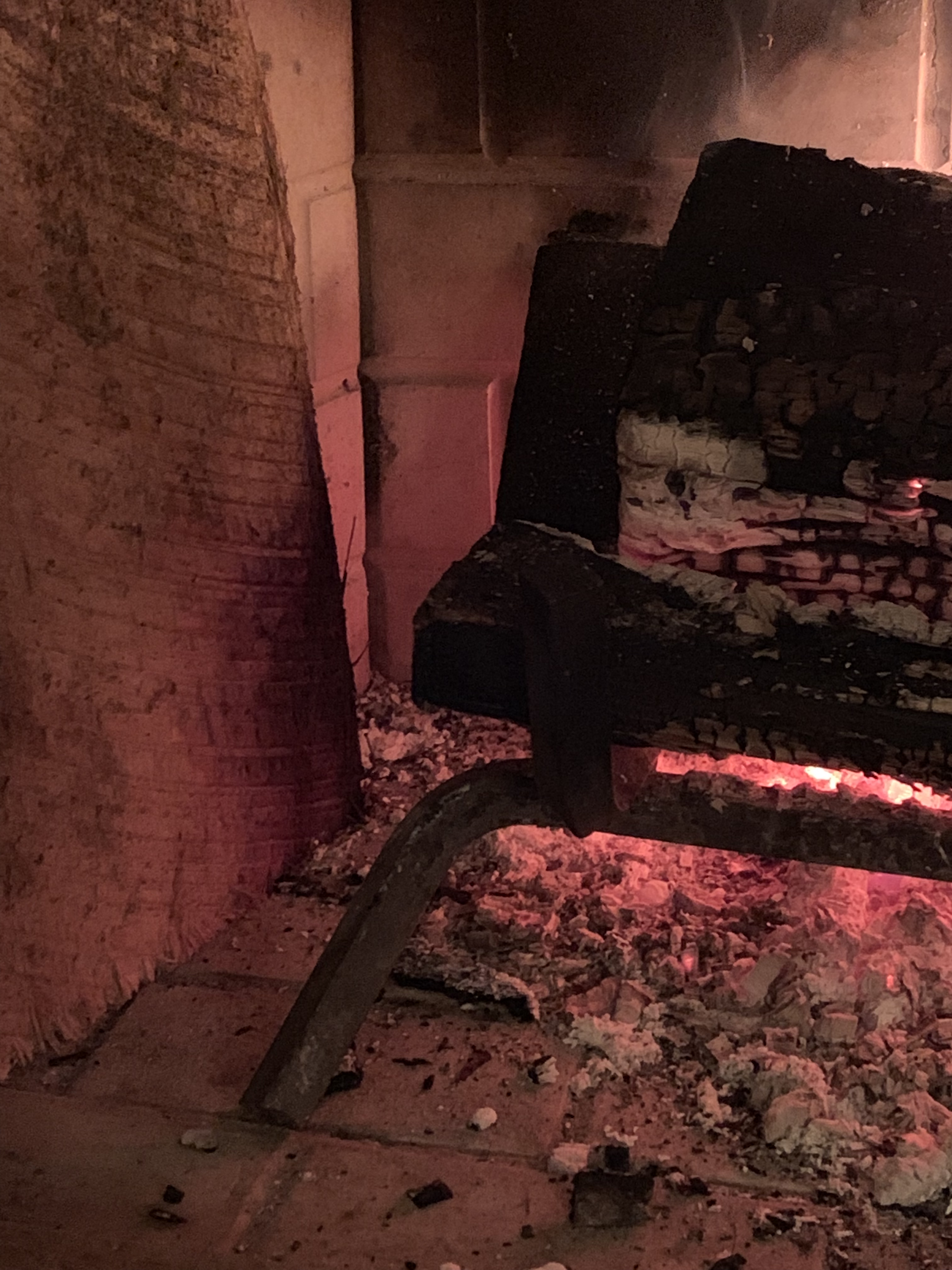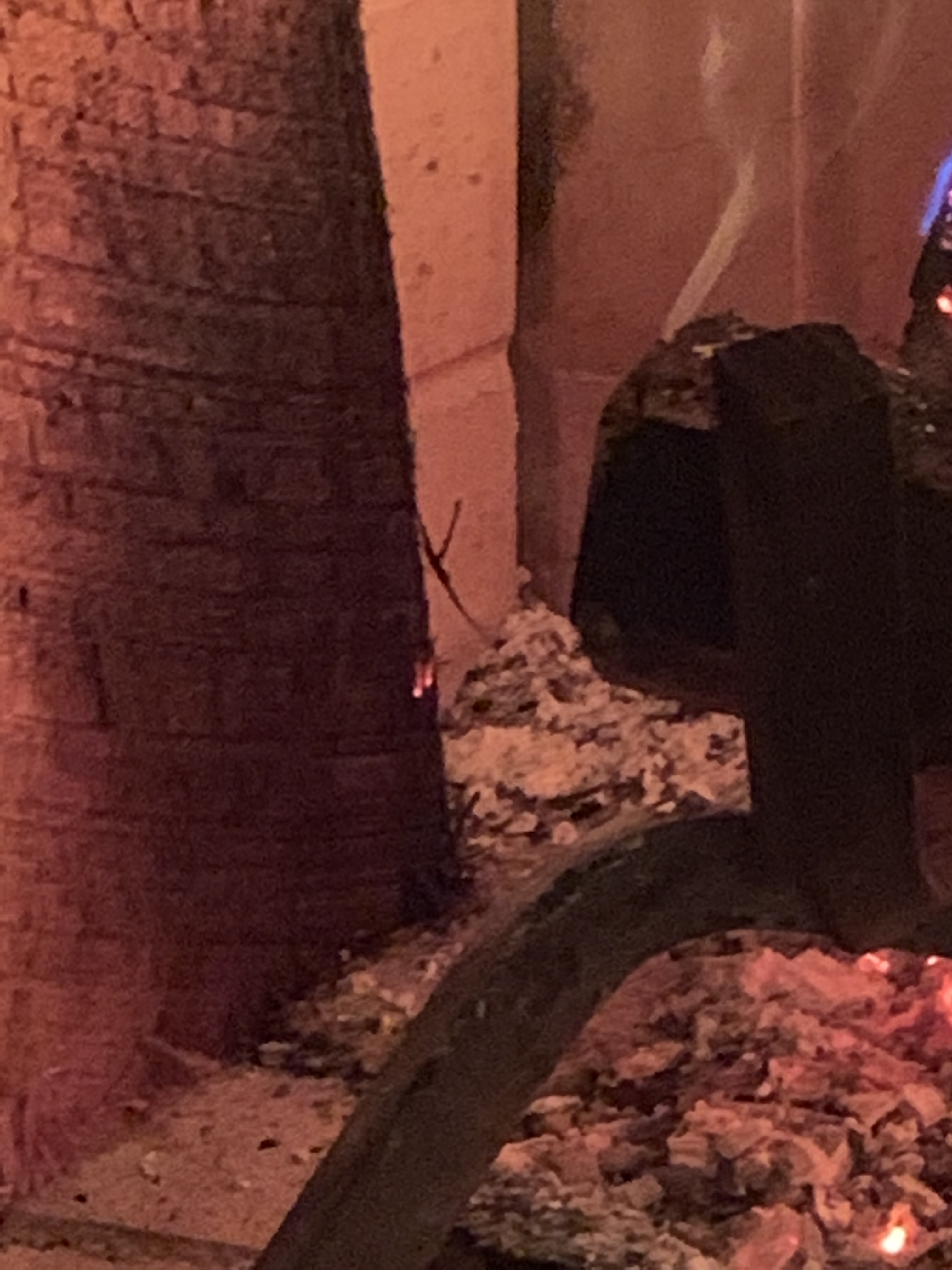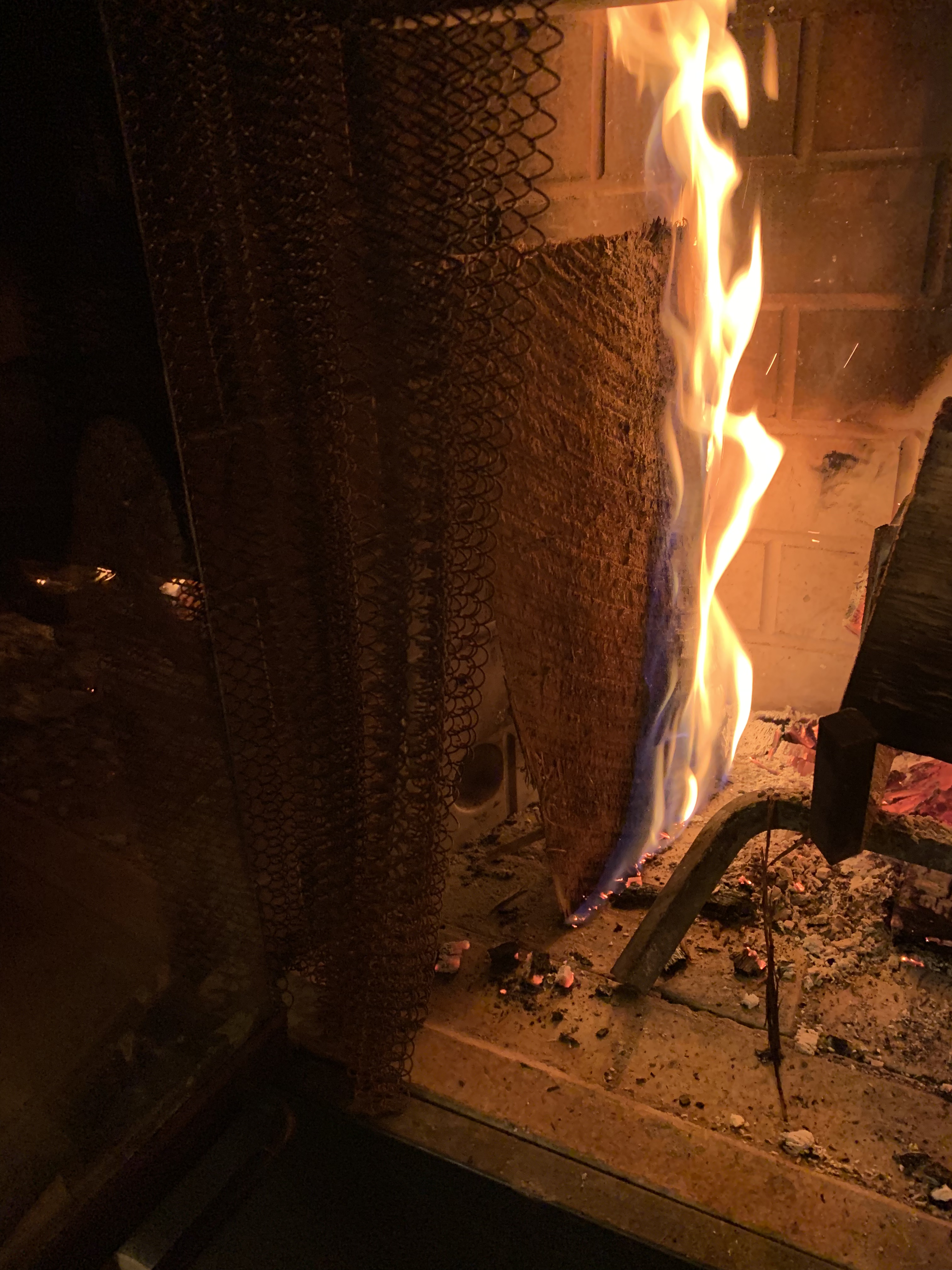So you may have heard me talk about clearances to combustibles once or twice before but here is a quick example of what the heat does to combustibles and how it can start a fire.
As heat is absorbed by a combustible, in the form of radiant heat, it slowly breaks down the ignition temperature that is needed to ignite the combustible. the process is called pyrolysis which is the thermal decomposition of a material through elevated heat. Ignition temperature of wood can drop to as low as 300 degrees after long-term exposure to heat!
One very key thing to also remember with ignition of the combustible is that
it will ignite without any direct contact with flame.
Here is a example in fast forward
:
1. Initial break down of wood from heat

As you can see, the Wood is not touching any flame throughout the timeframe.
2. Ignition temperature has been lowered through the process of pyrolysis

We are now on the border of combustion..
3. Combustion

A rather dramatic example of how pyrolysis works but this shows why I constantly obsess about maintaining proper clearances. The results are ultimately the same if clearances are not followed.
 As you can see, the Wood is not touching any flame throughout the timeframe.
2. Ignition temperature has been lowered through the process of pyrolysis
As you can see, the Wood is not touching any flame throughout the timeframe.
2. Ignition temperature has been lowered through the process of pyrolysis
 We are now on the border of combustion..
3. Combustion
We are now on the border of combustion..
3. Combustion
 A rather dramatic example of how pyrolysis works but this shows why I constantly obsess about maintaining proper clearances. The results are ultimately the same if clearances are not followed.
A rather dramatic example of how pyrolysis works but this shows why I constantly obsess about maintaining proper clearances. The results are ultimately the same if clearances are not followed.

